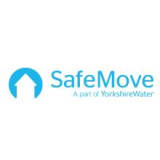This informal CPD article ‘The Water Industry (Schemes for Adoption of Private Sewers) Regulations 2011’ was provided by SafeMove a trading arm of Yorkshire Water. Formed in 2001, with an aim to provide drainage and water searches for conveyancing purposes, they produce around 90,000 searches per year through a team of expert advisors.
*all information is correct at time of writing, December 2023*
In September 2010, the government decided that most
- Private drains
- Lateral drains; and
- Private pumping stations; that were connected to a public sewer before 1st July 2011, would be transferred to the ownership of the water & sewerage companies in England and Wales on 1st October 2011.
Transfer was only eligible if connection to a public sewer was made before 1st July 2011.
As a result of this transfer, many drains, lateral drains and pumping stations that were originally private, then became part of the public sewer network. This meant that going forward, the cost of maintaining and repairing the transferred sewerage assets lied with the water and sewerage companies instead of the homeowner.
Homeowners would still be responsible for any private pipes that were within the boundary of their property, if that pipe only transported waste from their property. If the pipe transported waste belonging to them and a neighbour or several neighbours, then that pipe would be the responsibility of the water and sewerage company, as it would be classed as a lateral drain.
Let’s look at an example, a detached property will be responsible for all of the pipework within the boundary of the property as that pipework only carries waste from that property.
2 semi-detached properties, however, (depending on the direction of flow of the wastewater) will partly be the responsibility of one of the semi-detached homeowners and partly the responsibility of the water and sewerage company. Let us explain further, one of the semi-detached properties will have a pipe within their boundary that carries waste from their property only, that wastewater will at some point pass over a boundary to the next-door neighbour and then start collecting waste from that property too. The pipe that collects waste from one property only will be the responsibility of the property owner whose waste passes through that pipe.
The other semi-detached property that carries their own waste and that of their next-door neighbour, that pipe will be the responsibility of the water and sewerage company. Any pipe that has a shared usage is the responsibility of the water and sewerage company. Any pipe that serves 1 property only is the responsibility of the property owners until it starts to be shared with others.














